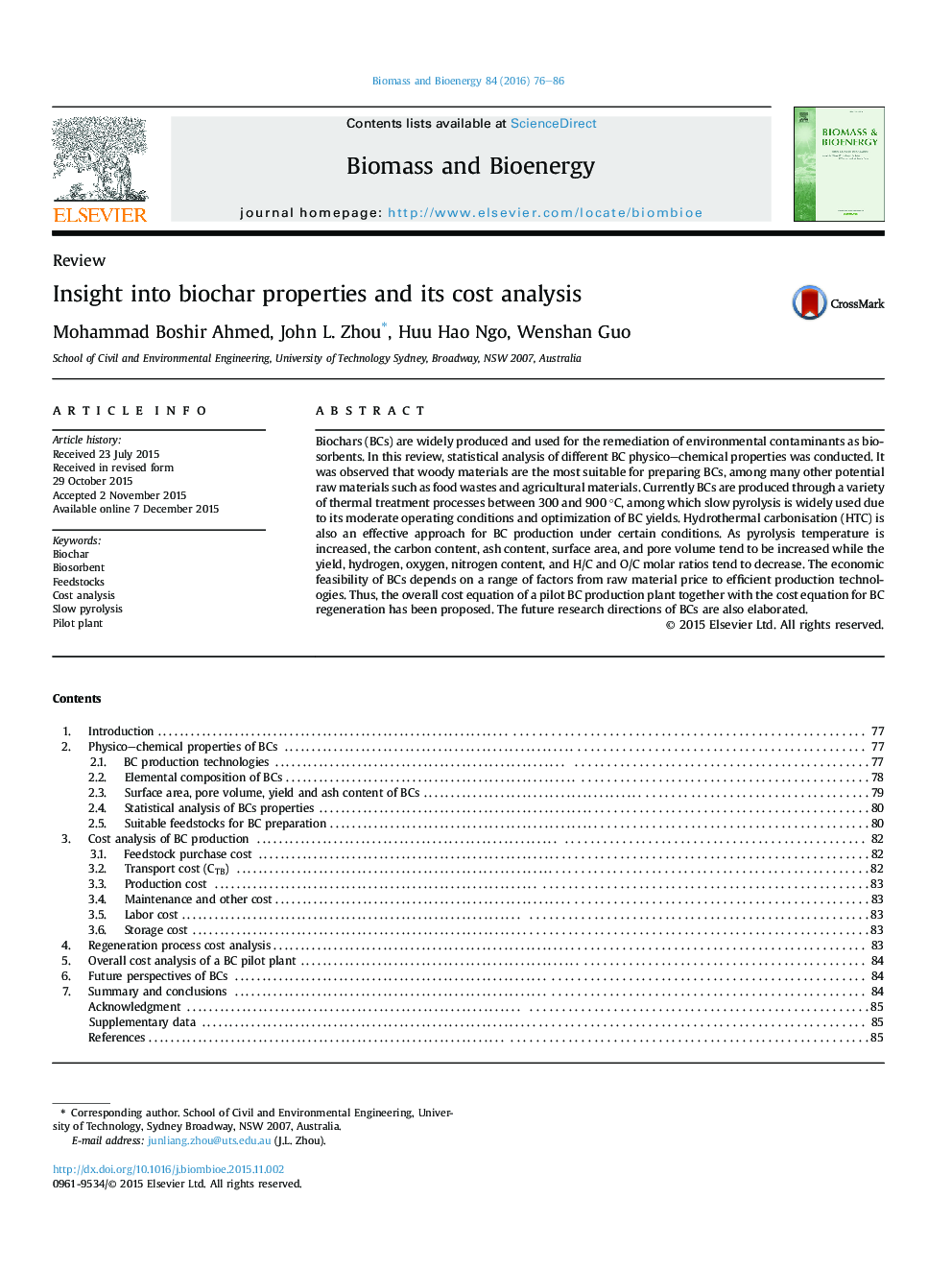| Article ID | Journal | Published Year | Pages | File Type |
|---|---|---|---|---|
| 676728 | Biomass and Bioenergy | 2016 | 11 Pages |
•Key physico–chemical properties of biochar have been assessed.•Slow pyrolysis is most widely used in biochar production.•Regeneration cost for biochar has been estimated.•Overall cost function of a pilot biochar plant has been proposed.
Biochars (BCs) are widely produced and used for the remediation of environmental contaminants as bio-sorbents. In this review, statistical analysis of different BC physico–chemical properties was conducted. It was observed that woody materials are the most suitable for preparing BCs, among many other potential raw materials such as food wastes and agricultural materials. Currently BCs are produced through a variety of thermal treatment processes between 300 and 900 °C, among which slow pyrolysis is widely used due to its moderate operating conditions and optimization of BC yields. Hydrothermal carbonisation (HTC) is also an effective approach for BC production under certain conditions. As pyrolysis temperature is increased, the carbon content, ash content, surface area, and pore volume tend to be increased while the yield, hydrogen, oxygen, nitrogen content, and H/C and O/C molar ratios tend to decrease. The economic feasibility of BCs depends on a range of factors from raw material price to efficient production technologies. Thus, the overall cost equation of a pilot BC production plant together with the cost equation for BC regeneration has been proposed. The future research directions of BCs are also elaborated.
Graphical abstractFigure optionsDownload full-size imageDownload as PowerPoint slide
